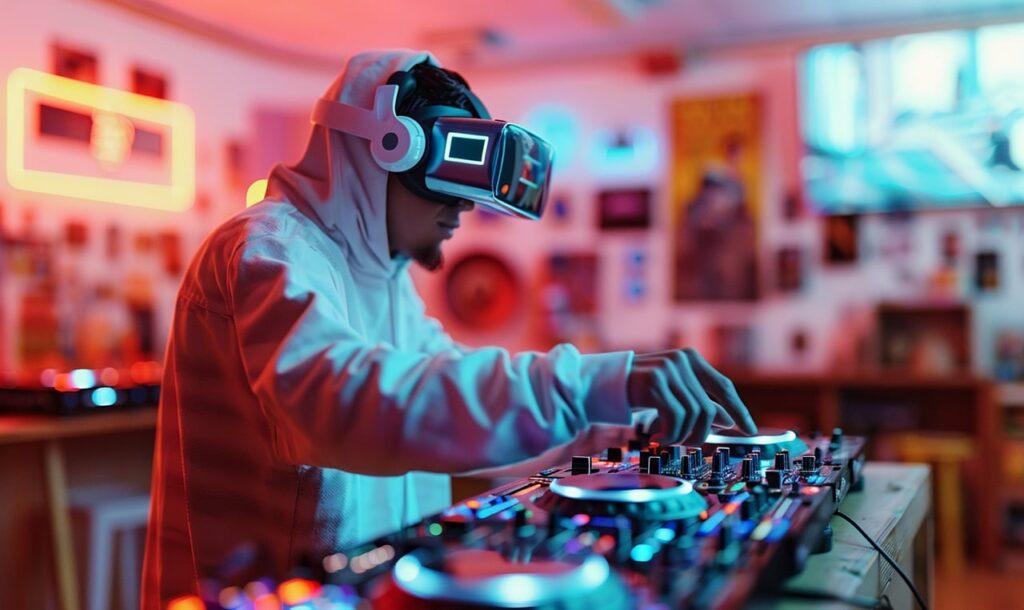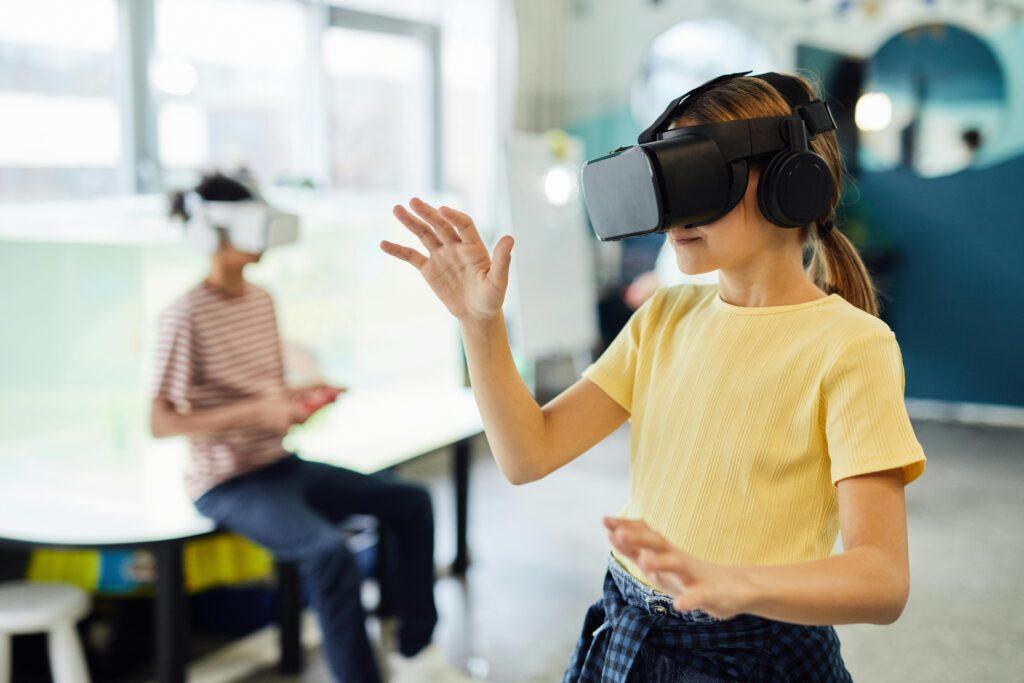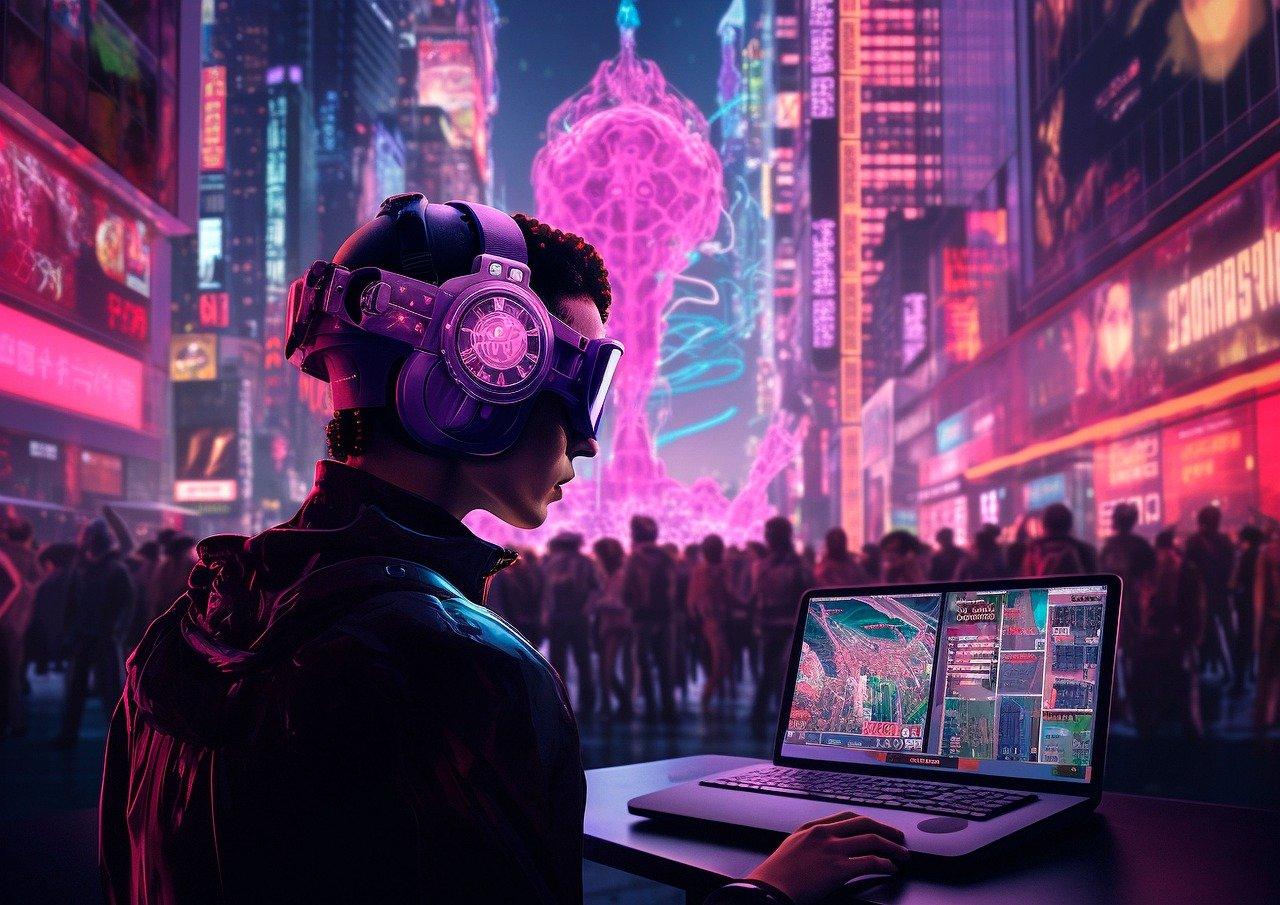
“From Sci-Fi to Reality: The Metaverse is Here and It’s Mind-Blowing!
The concept of the metaverse has captured the imagination of technologists, futurists, and everyday users alike. Often described as a collective virtual shared space created by the convergence of virtually enhanced physical reality and physically persistent virtual reality, the metaverse is poised to become the next significant evolution of the internet. This blog post delves into what the metaverse is, its potential applications, and why it represents a new digital frontier.
1. What is the Metaverse?
Definition: The metaverse is a virtual universe that exists parallel to our physical world, where users can interact with each other and digital objects in real-time. It is a shared, persistent, and immersive digital space that leverages augmented reality (AR), virtual reality (VR), and blockchain technologies.
Origins and Evolution: The term “metaverse” was first coined by author Neal Stephenson in his 1992 science fiction novel “Snow Crash,” where it referred to a virtual reality-based successor to the internet. Over the years, the concept has evolved, driven by advancements in technology and popularized by platforms like Second Life, Minecraft, and more recently, Fortnite and Roblox.
2. Key Technologies Enabling the Metaverse:
Augmented Reality (AR) and Virtual Reality (VR): AR enhances the physical world with digital overlays, while VR immerses users in a completely virtual environment. Together, these technologies create the immersive experiences that define the metaverse.
Blockchain and Cryptocurrencies: Blockchain technology provides the decentralized infrastructure necessary for the metaverse, enabling secure digital transactions and the creation of unique digital assets. Cryptocurrencies are often used within the metaverse to buy, sell, and trade virtual goods.
Artificial Intelligence (AI): AI powers the intelligent and interactive elements of the metaverse, from virtual assistants and NPCs (non-player characters) to real-time language translation and content generation.
Internet of Things (IoT): IoT connects the physical and digital worlds by allowing real-world objects to interact with the metaverse. For example, smart devices can provide real-time data that influences the virtual environment.

3. Applications of the Metaverse:
Gaming: Gaming is one of the most prominent applications of the metaverse. Games like Fortnite and Roblox offer immersive environments where players can socialize, create, and compete in a virtual space.
Education: The metaverse has the potential to revolutionize education by providing immersive learning experiences. Virtual classrooms, interactive simulations, and collaborative projects can enhance traditional education methods.
Work and Collaboration: Remote work can be transformed through the metaverse, offering virtual offices, meeting rooms, and collaboration spaces that replicate the physical office environment. Platforms like Microsoft Mesh and Facebook Horizon Workrooms are already exploring these possibilities.

Social Interaction: Social media and networking are being reimagined in the metaverse. Users can interact with friends, family, and strangers in virtual environments, attend events, and participate in shared activities.
Commerce and Economy: The metaverse has its own economy, with virtual goods and services being bought, sold, and traded. Digital real estate, fashion, and collectibles are just a few examples of how commerce is evolving within the metaverse.
Healthcare: Virtual reality can be used for therapeutic purposes, such as exposure therapy for phobias or PTSD. The metaverse can also provide a platform for virtual health consultations and remote patient monitoring.
4. Challenges and Considerations:
Privacy and Security: As with any digital space, the metaverse presents privacy and security concerns. Protecting user data and preventing cybercrime will be critical as the metaverse grows.
Digital Divide: Access to the metaverse requires technology and internet connectivity that may not be available to everyone, potentially exacerbating the digital divide.
Regulation and Governance: The decentralized nature of the metaverse poses challenges for regulation and governance. Determining how to manage and regulate activities in the metaverse will be an ongoing issue.
Ethical and Social Implications: The immersive nature of the metaverse raises ethical and social questions, such as the potential for addiction, the impact on mental health, and the blurring of lines between reality and virtuality.
5. The Future of the Metaverse:
Continued Technological Advancements: As technology continues to advance, the metaverse will become more immersive, accessible, and integrated into our daily lives. Innovations in AR, VR, AI, and blockchain will drive this evolution.
Integration with Physical World: The lines between the physical and virtual worlds will continue to blur, with the metaverse becoming an integral part of how we work, play, and interact.

New Opportunities: The metaverse will create new opportunities for businesses, entrepreneurs, and creatives. From virtual real estate development to digital fashion design, the possibilities are endless.
Empowering Users: The metaverse has the potential to empower users by providing new ways to express themselves, connect with others, and explore digital spaces. User-generated content and decentralized platforms will play a significant role in shaping the metaverse.
Conclusion:
The metaverse represents a new digital frontier with the potential to transform various aspects of our lives. While it presents challenges and considerations, the opportunities for innovation, creativity, and connection are vast. As we continue to explore and develop this virtual universe, the metaverse will undoubtedly become an increasingly important part of our digital future, reshaping how we interact with technology and each other.






